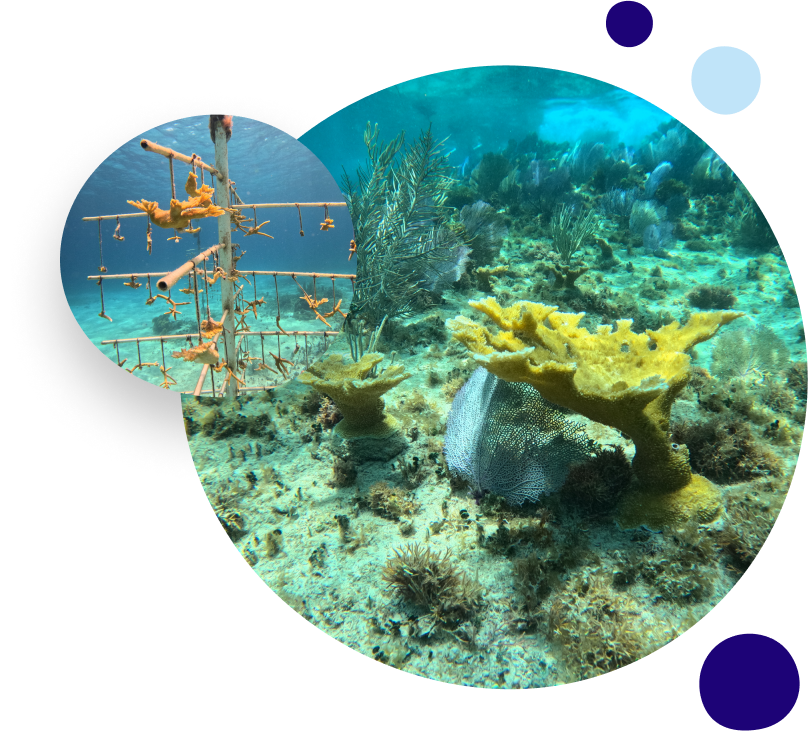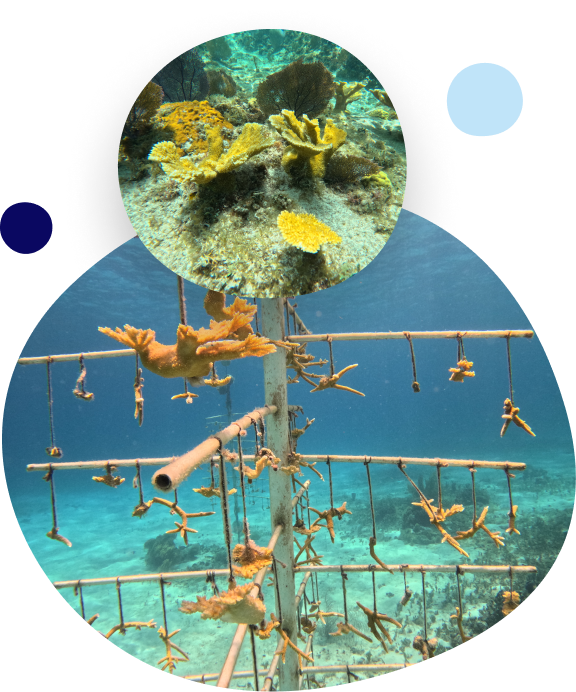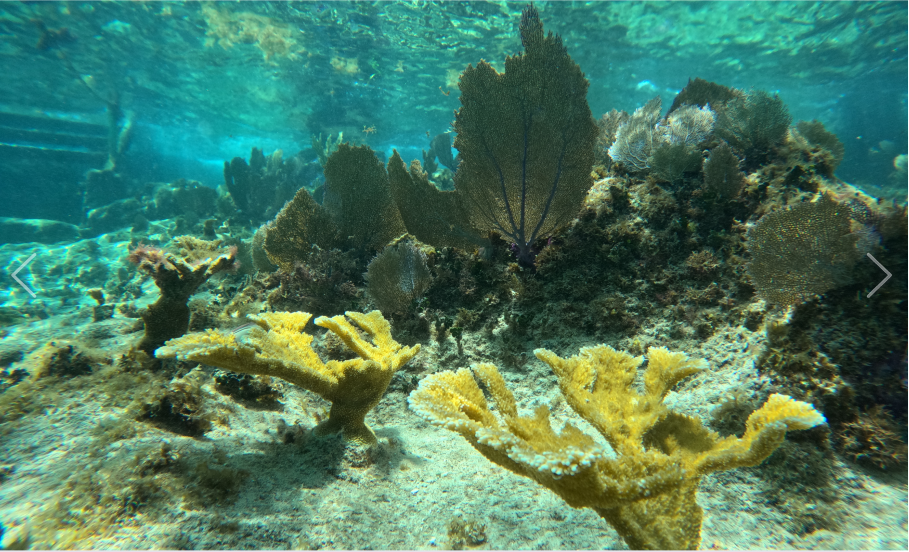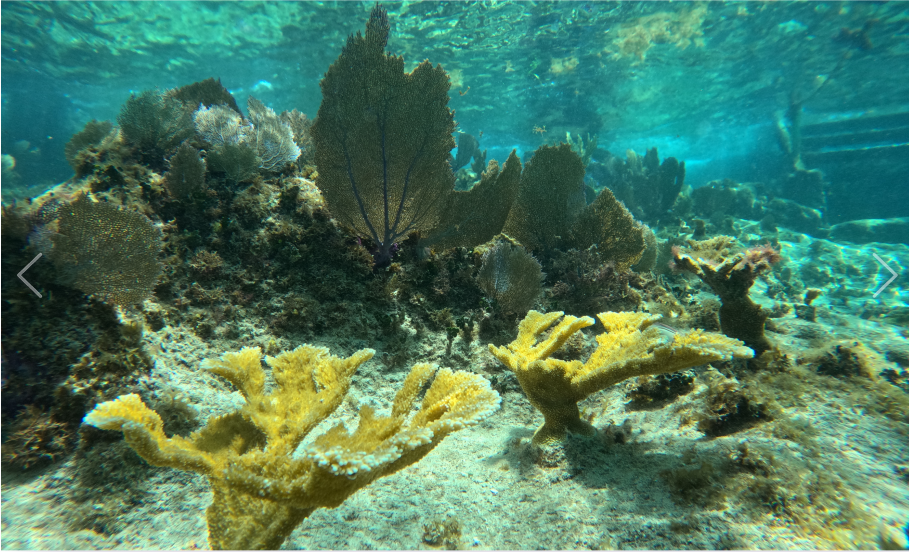Corals and Cozumel
Cozumel Island is designated as one of UNESCO’s biosphere reserves due its rich and diverse ecosystems, including the Mesoamerican Reef and more than 1,000 species that inhabit it.
Coral Reefs Are The Foundation Of Our Tropical Ocean Ecosystem, Providing Essential Habitat For The Beautiful And Fascinating Creatures Divers Love To See.
Sharks, turtles, rays, eels, octopuses, anemones, crabs, lobsters, urchins, finfish, and the other brilliantly colored creatures that divers and snorkelers flock to Cozumel to observe are dependent on healthy corals.
Cozumel’s tourism-based economy including dive operators, fishing guides, seafood producers, and the hospitality industry that has built up around the marine ecosystem all depend on healthy coral reefs.

Cozumel Has Had A Protected Area On The South Side Of The Island Since 1996 Named PARQUE NACIONAL ARRECIFES DE COZUMEL (PNAC).

As Licensed Operators, we are permitted to dive the following coral reef sites:
- Paradise
- Paradise shallow
- Las palmas
- Dzul Ha
- Playa corona
- Sky reef
- Pecio C-53
- Chankanaab bolones
- Chankanaab shallow
- Tormentos
- Yucab
- Punta tunich
- San clemente
- Cardona
- San Francisco
- San Francisco shallow
- Santa rosa wall
- Santa rosa shallow
- Cedral wall
- Cedral shallow
- Francesa
- Dalila
- Palancar gardens
- Palancar horse shoe
- Palancar caves
- Palancar bricks
- Colombia shallow
- Colombia intermedio
- Colombia deep
- El Cielo
- Punta sur
- Punta sur shallow
- Chunchakaab
- Maracaibo
How Corals Work
Corals are animals, though many people may mistake them for plants.
Corals have a unique, mutualistic relationship with a type of phyto-plankton (plant algae) called zooxanthellae.
The island of Cozumel, like many islands and coastal topographies (including South Florida), is made of limestone – a very porous rock created by the skeletons of marine organisms, including corals.
Zooxanthellae actually live inside the tissue of the corals, giving them their vibrant colors when they are healthy. The zooxanthellae use sunlight to photosynthesize, and this process creates sugars, which nourishes the corals. In return, the zooxanthellae receive protection and some nutrients from the corals.

Threats to Corals
Understanding the Dangers Facing Our Fragile Reefs.
Bleaching
When corals are stressed due to water that is too warm, they may expel the zooxanthellae on which they depend, leaving them to look white or “bleached” in appearance. Although corals can obtain a small amount of food from the water on their own, if they go too long without zooxanthellae, they can die. As ocean waters warm due to climate change, bleaching events are more common and more destructive throughout the world.
Acidification
Higher levels of acidity in ocean waters, due to the absorption of carbon from the atmosphere, prevent corals from building up their skeletons. Weaker corals are more susceptible to breaking and dying when storms, predators, or human interactions put physical stress on them.
Predators
There are species in the Cozumel ecosystem that naturally feed on coral polyps. While these species are important components of the ecosystem as well, excessive predation presents a threat to already-stressed corals.
Water Pollution
When corals are stressed due to water that is too warm, they may expel the zooxanthellae on which they depend, leaving them to look white or “bleached” in appearance. Although corals can obtain a small amount of food from the water on their own, if they go too long without zooxanthellae, they can die. As ocean waters warm due to climate change, bleaching events are more common and more destructive throughout the world.
Disease
Corals, like all animals, are susceptible to disease, which can quickly spread and kill entire coral reef ecosystems. These marine diseases are often transported in the ballast water of ships, including cruise ships, which travel vast distances throughout the Caribbean region. Disease pathogens may also be harbored and made worse by algae, sediment, and even plastic pollution in the ocean, creating multifaceted threats.
Physical damage by humans
The Impact of Human Actions on Coral Structures
Divers
Divers unable to control their buoyancy, unaware of the locations of their fins, dragging loose gear, or deliberately touching corals and other organisms all damage coral reefs.
Fishing gear
Loose nets and lines with hooks and sinkers can drag along coral reefs and harm them and other organisms in the ecosystem. “Ghost gear” – or fishing gear left behind, can tangle and destroy lifeforms long after the fishermen have left.
Infrastructure
The development of infrastructure along the coast, especially piers, directly destroys coral reefs in its path and contributes to the degradation of surrounding areas.
Boats
Boats that “run aground” on coral reefs also directly damage corals.
At Caribe Paradise Divers we encourage all to reduce the pressures that are within our control to help corals survive and continue to support our essential Parque Marino Arrecifes de Cozumel ecosystems.
What can we do to protect our reefs?
Practical Steps to Safeguard Cozumel’s Coral Reefs
- Follow existing rules. Regulations to protect coral reef ecosystems are in effect within the National Marine Parque Arrecifes de Cozumel, and you can follow (and encourage others in your group to follow) them in all areas of Cozumel.
- In the National Marine Park Arrecifes de Cozumel, It Is Strictly Prohibited:
- To use any sunscreen (including “reef-friendly” or “biodegradable”)
- To stand on or take hold of the coral reefs
- To carry spears, hooks, harpoons or explosives
- To fish for, collect, disturb, or keep any marine life organism found in the Park (fishes, corals, shells, starfish, etc.)
- To carry spears, hooks, harpoons, or explosives
- To carry gloves or knives
- To disturb or remove fauna and flora from their refuge
- To feed any fish or animals in the Marine Park
- To dispose of any kind of solid waste in the ocean
- To dump fuel, grease, oil, or any other liquid substances into the ocean
- Don’t use sunscreen when you will be entering the water in Cozumel! Yes, we already said this, but we are saying it again. A rash guard, big hat, sunglasses, and sun buff are better for you, and much better for the corals.
- Learn how to control your buoyancy, and stay far away from the reef until you can.
- Unless you are participating in a supervised restoration project, do not touch anything in the coral reef ecosystem.
- Reduce the amount of garbage you create while in Cozumel, and never litter.
- Respect the closed rotation calendar on the reefs. PNAC has a program that closes some reefs to divers for two months, to allow the ecosystem recovery time.
- Only dive with dive operators that are authorized by Parque Marino Arrecifes de Cozumel (like Caribe Paradise!)
- Donate to local coral restoration efforts like Cozumel Coral Reef Restoration Program


